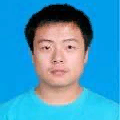International Journal of Image, Graphics and Signal Processing (IJIGSP)
IJIGSP Vol. 3, No. 4, 8 Jun. 2011
Cover page and Table of Contents: PDF (size: 475KB)
The Registration of Knee Joint Images with Preprocessing
Full Text (PDF, 475KB), PP.10-17
Views: 0 Downloads: 0
Author(s)
Index Terms
Image registration, preprocessing, knee join, CT, MR
Abstract
The registration of CT and MR images is important to analyze the effect of PCL and ACL deficiency on knee joint. Because CT and MR images have different limitations, we need register CT and MR images of knee joint and then build a model to do an analysis of the stress distribution on knee joint. In our project, we adopt image registration based on mutual information. In the knee joint images, the information about adipose, muscle and other soft tissue affects the registration accuracy. To eliminate the interference, we propose a combined preprocessing solution BEBDO, which consists of five steps, image blurring, image enhancement, image blurring, image edge detection and image outline preprocessing. We also designed the algorithm of image outline preprocessing. At the end of the paper, an experiment is done to compare the image registration results without the preprocessing and with the preprocessing. The results prove that the preprocessing can improve the image registration accuracy.
Cite This Paper
Zhenyan Ji,Hao Wei,"The Registration of Knee Joint Images with Preprocessing",IJIGSP, vol.3, no.4, pp.10-17, 2011. DOI: 10.5815/ijigsp.2011.04.02
Reference
[1]Paul Viola and William M. Wells Ⅲ,”Alignment by maximization of mutual information” [J].International journal of computer vision, vol 24 No. 2,1997:137~154;
[2]B. Likar, F.Pernus,”A hierarchical approach to elastic registration based on mutual information”, Image and vision Computing,19, 2001:33~44;
[3]Josien P. W. Pluim, J. B. Antoine Maintz and Max A. Viergever, “Image registration by maximization of combined mutual information and gradient information”, Medical image computing and computer-assisted intervention – MICCAI 2000, 2000, Volume 1935/2000 : 103-129
[4]Chen Xiaoyan,Gu Jia,Li Songyi,Shu Huazhong, Luo limin, “A method based on mutual information and gradient information for medical image registration” .Journal of Southeast University(English Edition),2003,19(1):35~39;
[5]Mattew Mellor.Micheal Brady. “Phase mutual information as a similarity measure for registration” Medical Image Analysis,vol 9, issue 4, August 2005:330~343;
[6]Gonzalez, Rafael C., Woods, Richard E. Eddins, Steven L., Digital image processing using MATALB, Published by Pearson Prentice Hall, Upper Saddle River, NJ USA, 2004.,
[7]Study and Comparison of Various Image Edge Detection Techniques, Raman Maini, Himanshu Aggarwal, International Journal of Image Processing (IJIP), Volume 3, Issue 1, Febuary 2009
[8]Klaus Engel, Markus Hadwiger, Joe Kniss, Christof Rezk-Salama, Daniel Weiskopf, “Real-Time volume graphics” 2006, A K Peters, Ltd, P112
[9]John H. Mathews, Kurtis K. Fink, Numerical methods using matlab, 4th edition,2004, Prentice-Hall Inc.: 434-439
[10]Frederik Maes, Andre Coolignon,Dirk Vandermeulen, Guy Marcha, and Paul Suetens, “Multimodality image registration by maximization of mutual information”, IEEE transactions on medical imaging, vol 16, No. 2, April 1997
[11]Zhang Yujin, Image engineering (Ⅰ) image processing (second edition), Tring Hua Univeristy Press, P58 -61

